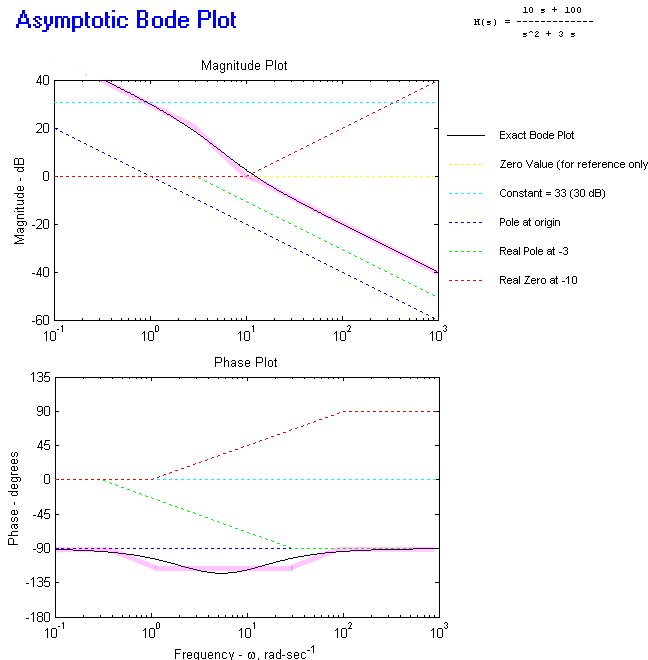Bode Plot: Example 3
Draw the Bode Diagram for the transfer
function:

Step 1: Rewrite the
transfer function in proper form.
Make both the lowest order term in the numerator and
denominator unity. The numerator is an order 1 polynomial, the
denominator is order 2.

Step 2: Separate the
transfer function into its constituent parts.
The transfer function has 4 components:
- A constant of 33.3
- A pole at s=-3
- A pole at s=0
- A zero at s=-10
Step 3: Draw the Bode
diagram for each part.
This is done in the diagram below.
- The constant is the cyan line (A
quantity of 33.3 is equal to 30 dB). The phase is constant at 0
degrees.
- The pole at 3 rad/sec is the green
line. It is 0 dB up to the break frequency, then drops off with a
slope of -20 dB/dec. The phase is 0 degrees up to 1/10 the break
frequency (0.3 rad/sec) then drops linearly down to -90 degrees at 10
times the break frequency (30 rad/sec).
- The pole at the origin. It is
a straight line with a slope of -20 dB/dec. It goes through 0 dB at
1 rad/sec. The phase is -90 degrees.
- The zero at 10 rad/sec is the red
line. It is 0 dB up to the break frequency, then rises at 20 dB/dec.
The phase is 0 degrees up to 1/10 the break frequency (1 rad/sec) then
rises linearly to 90 degrees at 10 times the break frequency (100
rad/sec).
Step 4: Draw the overall Bode diagram by
adding up the results from step 3.
The overall asymptotic plot is the
translucent pink line, the exact response is the black line.




